Having had a great time at the World’s Smallest St Patrick’s Day Parade and that evening’s homebrew competition, one of our new friends in Enterprise, Alabama offered to take us to the US Army Aviation Museum a couple of days later.
The US Army Aviation Museum is a free museum at Fort Rucker, so Guillain picked us up on Monday morning and drove us over. As it’s located on an army base, we had to sign in, complete a form and provide ID. This process can apparently take a little while, but we got lucky the day we visited and were on our way within about five minutes.
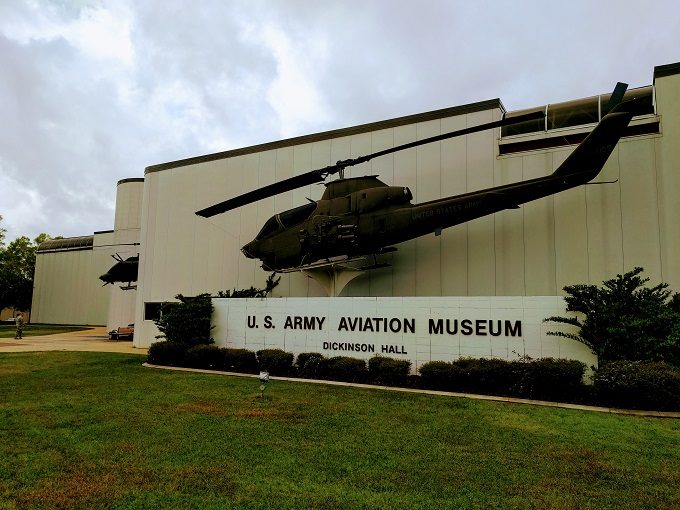
After entering the museum, we got chatting to Mr Rudolph – one of the museum’s volunteers. Shae and I mentioned our 50 state road trip, so he gave us a bunch of suggestions for unique museums to visit in Ohio which we’ve added to our list.
The first exhibits we saw at the US Army Aviation Museum were about the US Army Balloon Corps. That branch never really took off (pun intended), so this was a brief exhibit.
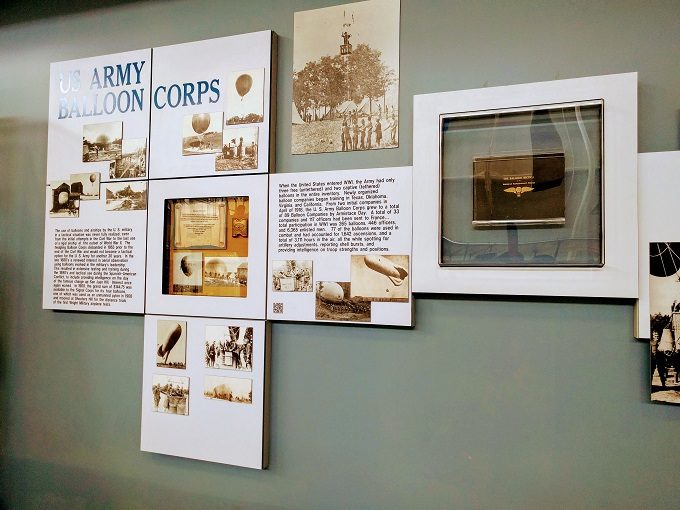
From balloons we moved on to early airplanes. One of those was the Bleriot XIII Monoplane, the first aircraft to cross the English Channel…
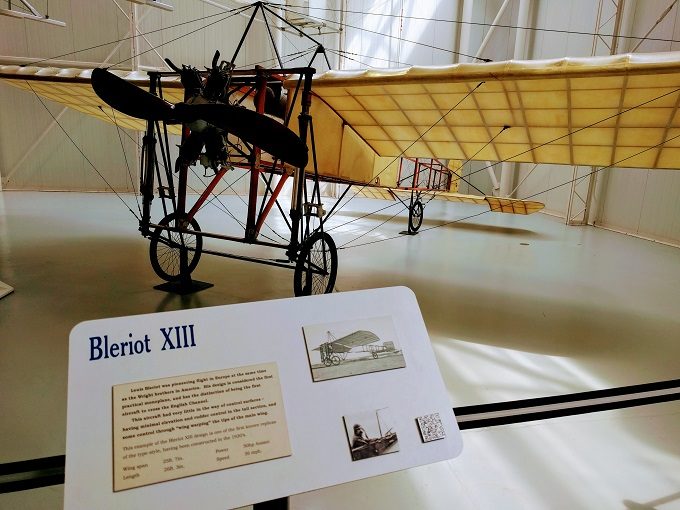
There was a Royal Aircraft Factory SE-5A, a biplane that was used in World War I…
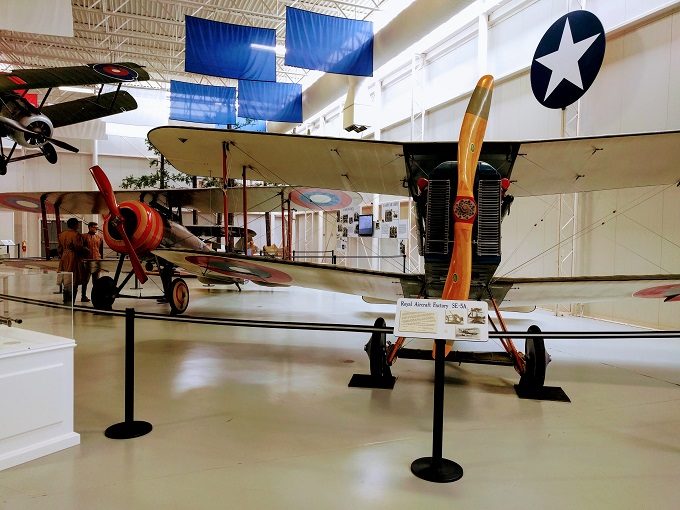
…as well as a Piper J-3 Cub which was used in World War II.
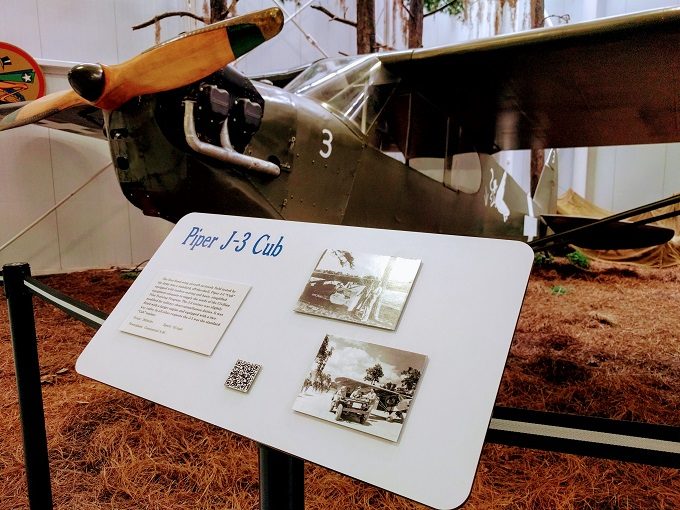
Having checked out some early airplanes, we moved on to the helicopter area. First up was a display about Igor Sikorsky, the creator of the first American helicopter.
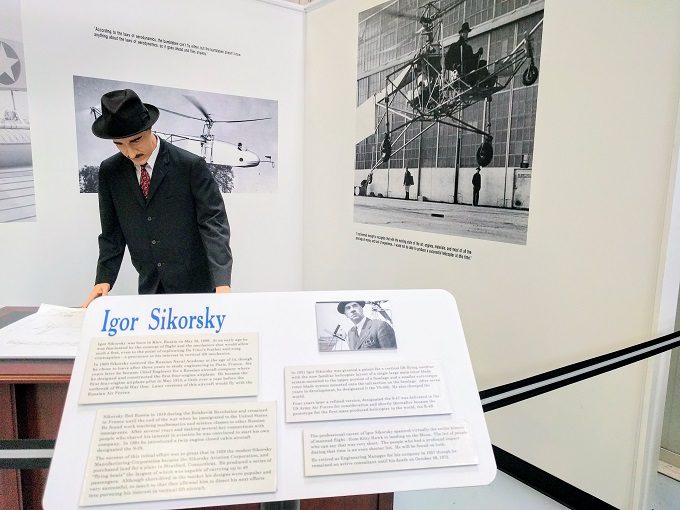
The US Army saw how helpful the helicopter could be for military operations, including the rescue of injured personnel. April 1944 saw the first rescue involving a helicopter which we learned about at the museum.
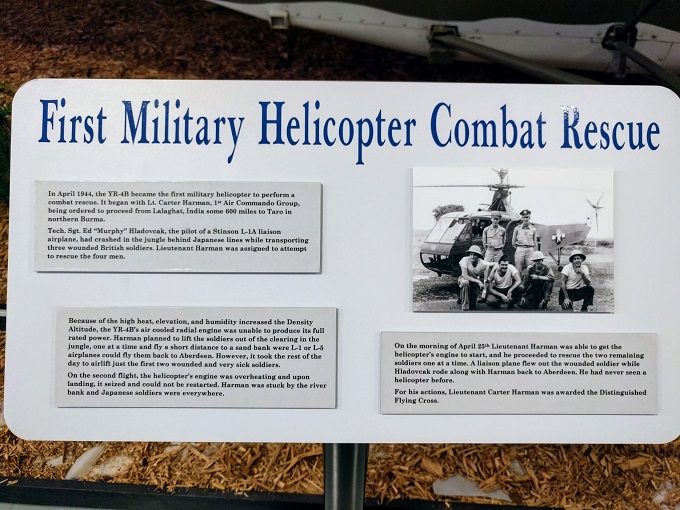
The room was full of helicopters from early examples to more recent models.
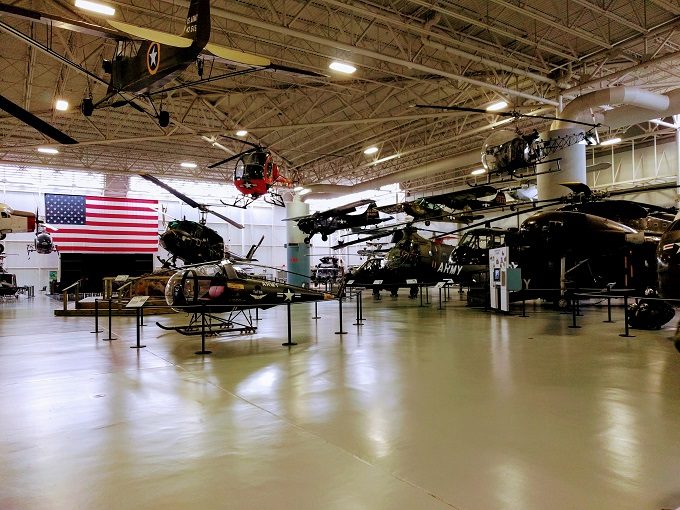
They had a VCH-34A Army One which was used to transport several presidents over the years, including John F. Kennedy and Dwight D. Eisenhower. The wife of one of the presidents (I’ve forgotten which one) hated the hot and humid conditions in the helicopter so much, they added air conditioning to make flights more bearable.
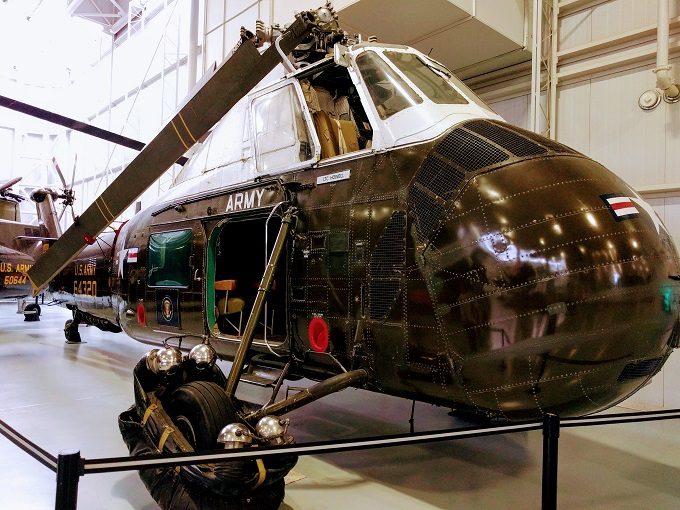
The US Army Aviation Museum also had a Sikorsky H-37 which was capable of transporting vehicles weighing one ton.
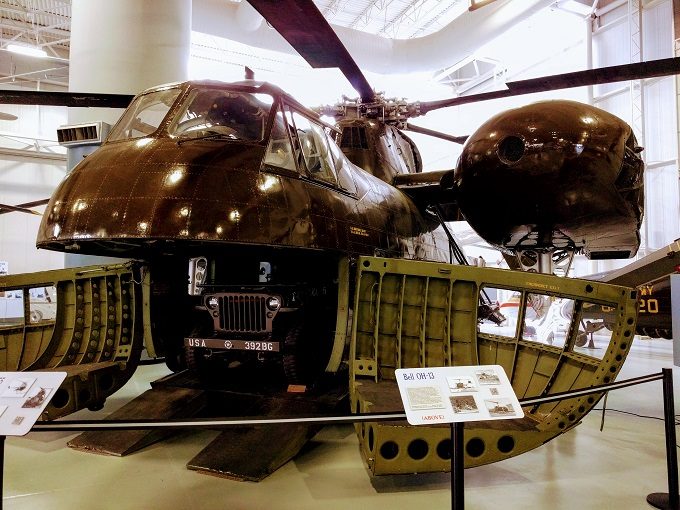
A museum about aviation in the US Army wouldn’t be complete without one of its most iconic helicopters – the Boeing Vertol CH-47, more commonly known as the Chinook.
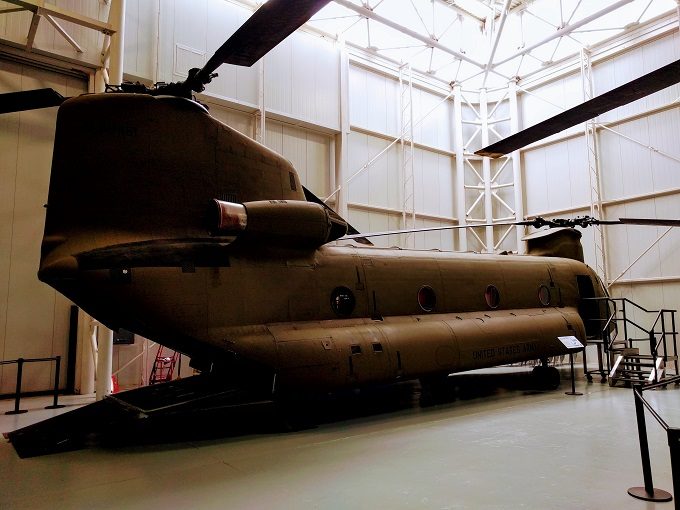
Unlike most of the other exhibits, you’re allowed to get into this helicopter and experience its seating.
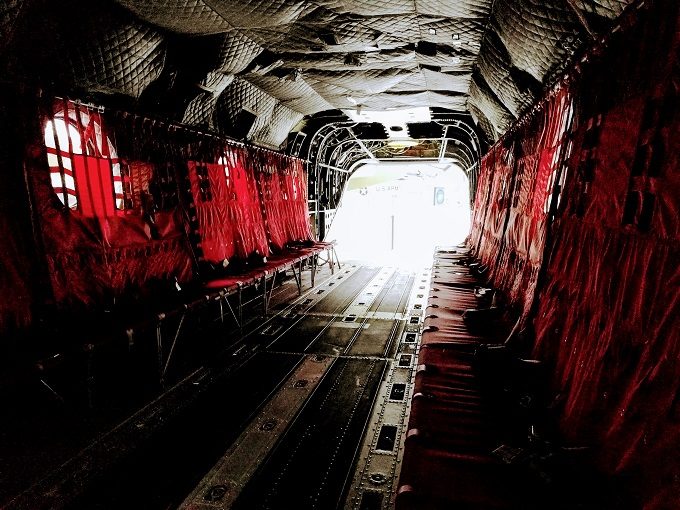
Although you’re not allowed into the cockpit, you’re able to see into it and view its numerous controls and dials.
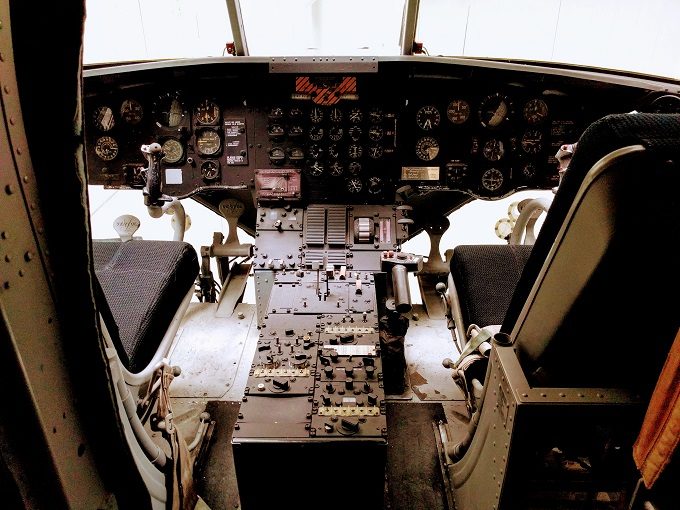
After the helicopters, there was a small display of missiles. It’s amazing – and saddening – to consider how much destruction can result from something so small.
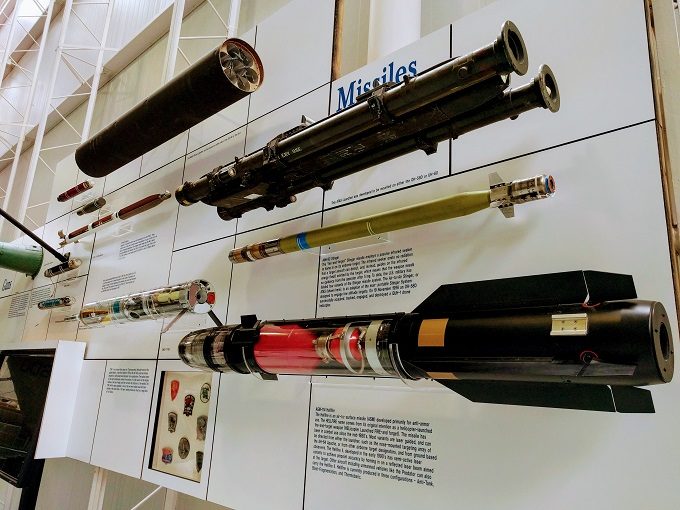
Having viewed the exhibits on the first floor, we made our way upstairs where there were several more. One of the main exhibits is the Army Aviation Vietnam Memorial featuring the names of all the soldiers that died in the war.
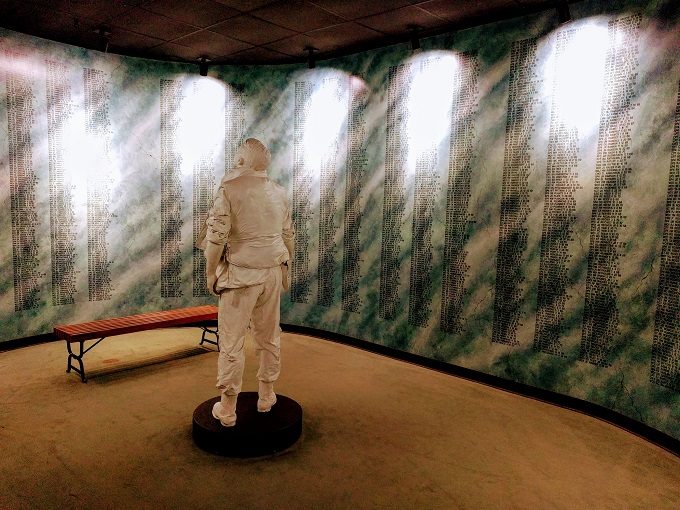
The US Army Aviation Museum houses a section from the Berlin Wall.
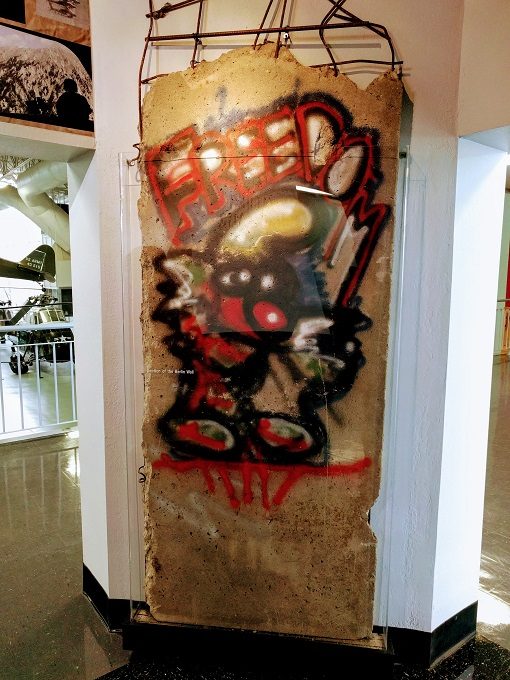
The Berlin Wall was just one part of the Iron Curtain, a figurative term referring to boundaries in Europe that were erected from the mid-to-late 1900s. There was also another section from the Iron Curtain on display in the museum.
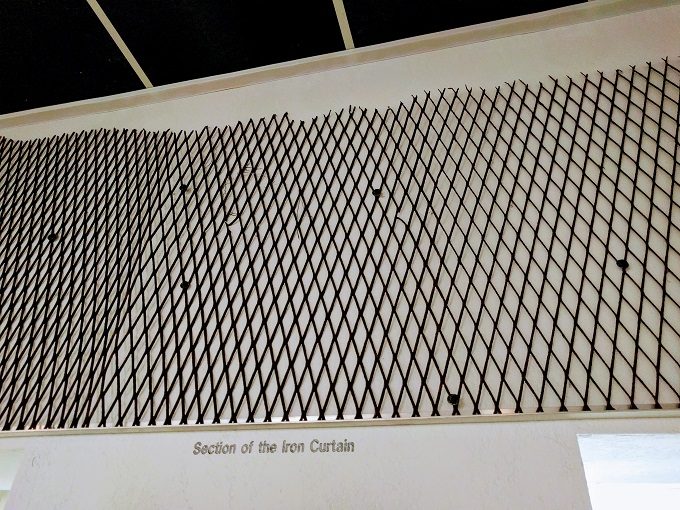
Although we didn’t get to go up front in the Chinook’s cockpit, we did get to sit in the cockpit of another helicopter.
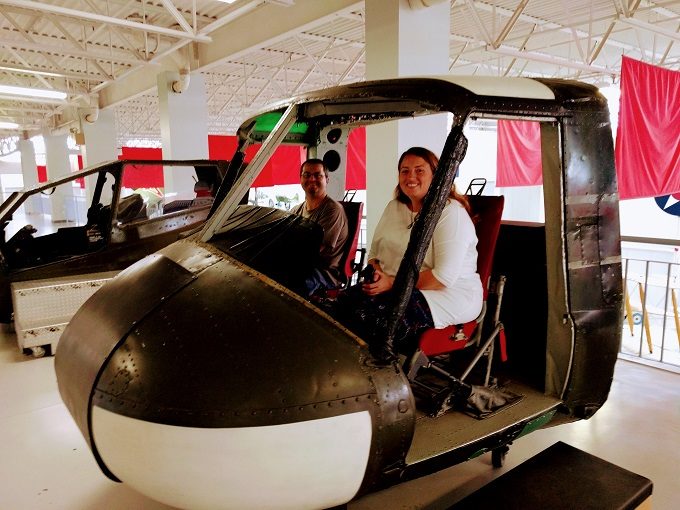
We also got to feel the breeze through our hair in an airplane.
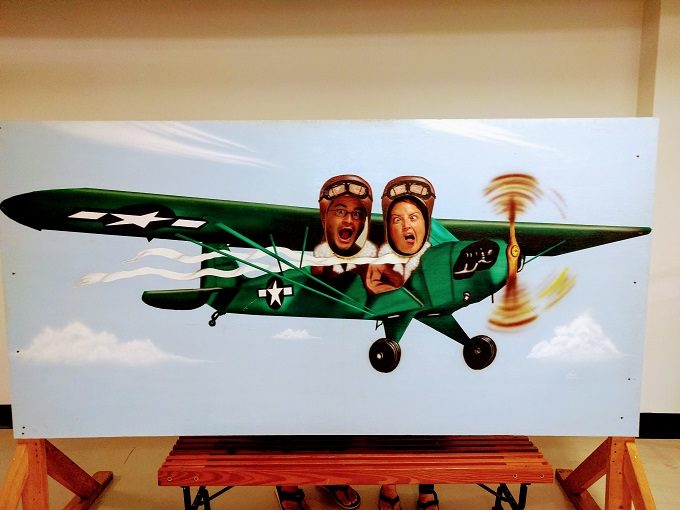
That was the end of the exhibits in the museum, but there was one more thing Guillain said we needed to see outside.
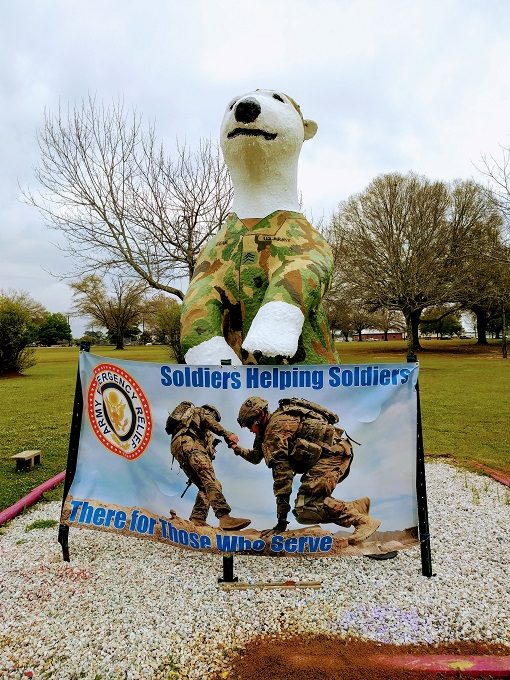
That’s Sgt Ted E. Bear. Weighing 1,500 lbs, he’s been serving at Fort Rucker for more than 50 years. Guillain shared that he’s regularly decorated in different outfits by candidates from the Warrant Officer Career College. His current outfit is the fatigues you can see above.
Final Thoughts
The US Army Aviation Museum at Fort Rucker was even more interesting than I’d expected. There are plenty of historical airplanes and helicopters to check out, as well as informative displays to help you learn more about the history on display.
All that would make it a worthwhile visit, so the fact that it’s free makes visiting the museum a no-brainer if you’re in the area.
I was the pharmacy officer at Fort Rucker from early 1961 to April 1963. My wife was with me and we lived at 28 Olson Lane for most of that time. While there I printed the first army Drug Formulary which included the cost of every drug. I have one copy of the formulary and I would love to donate it to Fort Rucker!
Thanks for your comment. The best thing to do would be to reach out to Fort Rucker directly – their contact page looks like it has a few different ways to do that: https://www.rucker.army.mil/info/contact/
A visit is on the books for my bucket list. Met a lot of really nice people there during my stay. Instead of Woodstock I knew sooner or later I didn’t need rain an mud training lol. Went to Panama City instead
I chose being a MP over the far greater risk of flying a Mohawk, which they wouldn’t let me fly because the Army needed Huey pilots for some strange reason in 1967 when Nam was Hot.
My step-dad had taught duel engine flying at the Fort Rucker Fixed Wing School, so I had two reasons to veer from the course of my nationwide trip and visit The U.S.Army Aviation Museum.
I am glad I did, and sad I didn’t stay longer.
Anyone who likes flying will like their visit because of the number of aircraft and their presentation and that the entire place is laid out to give you a history lesson without the lectures.
Absolutely worth the visit.